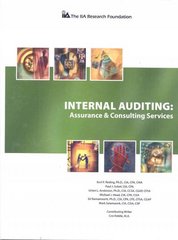Sharp Company manufactures a product for which the following standards have been set: Standard Quantity Standard Price Standard or Hours or Rate Cost Direct materials 3 feet $11 per foot $33 Direct labor ? hours ? per hour ? During March, the company purchased direct materials at a cost of $111.300, all of which were used in the production of 3.200 units of product. In addition, 4,900 direct labor-hours were worked on the product during the During March, the company purchased direct materials at a cost of $111.300, all of which were used in the production of 3,200 units of product. In addition, 4,900 direct labor-hours were worked on the product during the month. The cost of this labor time was $95,550. The following variances have been computed for the month: Materials quantity variance $4,400 U Labor spending variance $450 F Labor efficiency variance $2,000 U Required: 1. For direct materials: Required: 1. For direct materials: a. Compute the actual cost per foot of materials for March. b. Compute the price variance and the spending variance. 2. For direct labor: a. Compute the standard direct labor rate per hour. b. Compute the standard hours allowed for the month's production c. Compute the standard hours allowed per unit of product. (Hint: In completing the problem, it may be helpful to move from known to unknown data either by using the columnar format shown in Exhibits 10-4 and 10-6 or by using the variance formulas in Exhibits 10-5 Problem 10A-11 (30 minutes) 1. Direct materials, Direct labor .... Variable manufacturing overhead Fixed manufacturing overhead ....... Standard cost per unit........ 2. Materials variances: The variance analysis for plates would be: Actual Quantity of Input, at Actual Price Standard Quantity Allowed for Output, at Standard Price Actual Quantity of Input, at Standard Price (_X ) yards x per yard (x yards x per yard $ 1 1 1 The variance analysis for plates would be: Actual Quantity of Input, at Actual Price (x _) Actual Quantity of Input, at Standard Price Standard Quantity Allowed for Output, at Standard Price cx ) X yards x per yard yards x per yard $ 1 1 1 Materials price variance, $ F/U yards x per yarde = $ 1 Materials quantity Variance, $$ F/U Labor variances: The variance analysis would be: Actual Hours of Input, at the Actual Rate (x Actual Hours of Input, at the Standard Rate (x) Standard Hours Allowed for Output, at the Standard Rate (x ) hours x hours x $ $ per hour $ per hour $ = $ = $ 1 1 1 Labor efficiency Labor rate variance, variance, $ U/F $ F/U Spending variance, $ U/F 3. Variable overhead variances: Actual DLHs of Input, at the Actual Rate Actual DLHs of Input, at the Standard Rate Standard DLHS Allowed for Output, at the Standard Rate (x _) CX __) cx _) $ DLHS DLHS x $ per DLH x $ per DLH = $ = $ The McGraw-Hill Companies, Inc., 2021. All rights reserved. Solutions Manual, Appendix 10B 9 E 1 1 1 Variable overhead rate variance, $ U Variable overhead efficiency variance, F Spending variance, $ F 1 Variable overhead rate Variable overhead variance, efficiency variance, $ U $ F Spending variance, $ F Fixed overhead variances: Actual Fixed Overhead Budgeted Fixed Overhead Fixed Overhead Applied to Work in Process $ DLHs X $ per DLH = $ 1 1 1 Budget variance, $ U/F Volume variance, $ F/U 4. The choice of a denominator activity level The volume variance can/cannot be controlled by controlling spending















